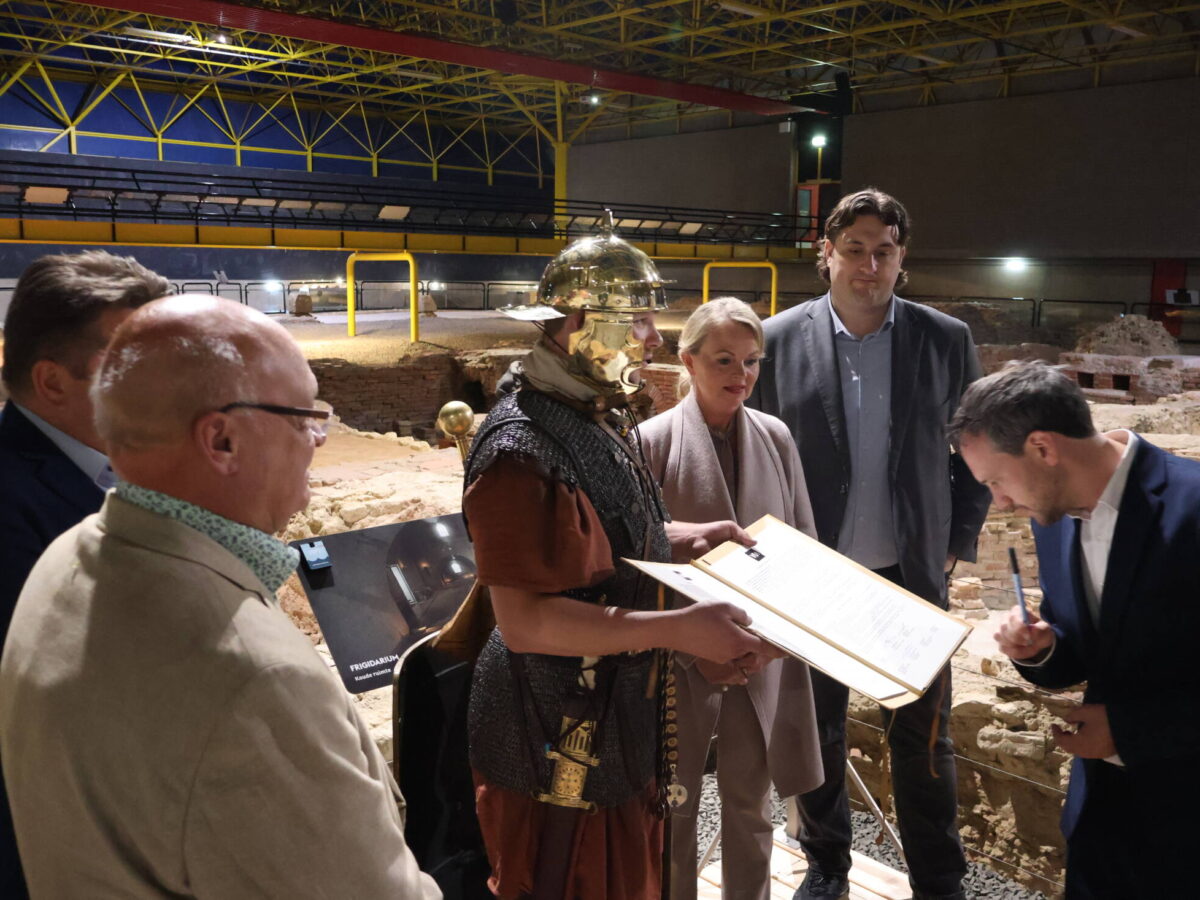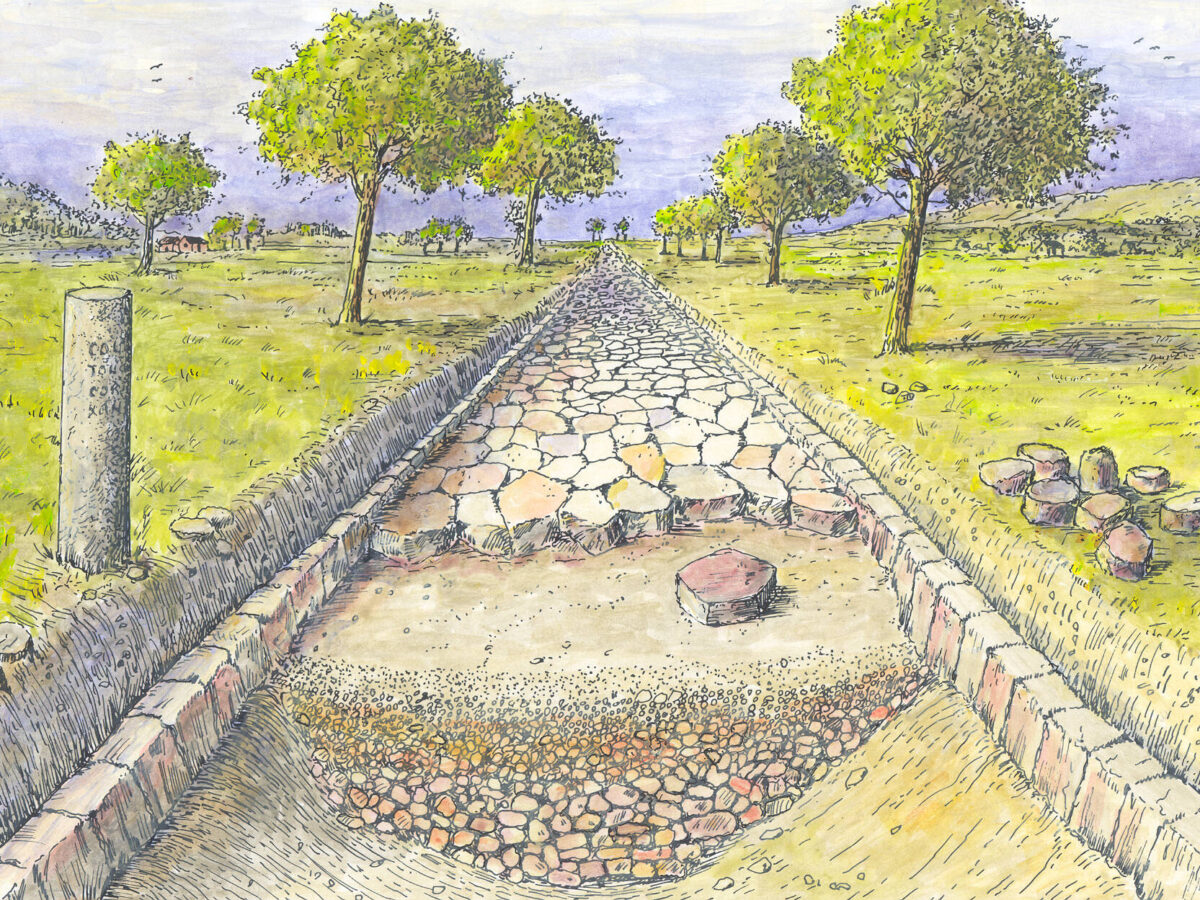Via Belgica broadens the horizon
Author: Harry Lindelauf
Photography: Anja Neskens

Under the watchful eye of legionary Primus Flavius Cellerinus (Yannick Peters), administrators of the province and municipalities signed the agreement on Thursday, May 16, 2024, to extend the Via Belgica project until 2027. The signing took place most appropriately in the Roman Museum / Thermenmuseum in Heerlen.
Maastricht, Meerssen, Valkenburg, Voerendaal, Heerlen, Simpelveld, Kerkrade and the province of Limburg are once again joining forces to unlock the Roman past of South Limburg for residents and visitors. After 20 years of Via Belgica cooperation, the partners want to take the next step. So far, the project has focused on professional promotion and attracting tourists. The next step means that education, scientific research and international cooperation will be added to the objectives. By 2027, there should be an attractive tourism heritage project, supported by scientists and offering activities mainly tailored to families with children and people aged 55 and over. To achieve this, the project aims for investments to improve the experience of the landscape routes and to establish a permanent annual program in cooperation with the Friends of the Via Belgica.

From the road to the landscape
Where in the past the focus was mainly on the South Limburg section of the Roman road between Cologne and Boulogne-sur-Mer (modern name Via Belgica), attention in the coming years will broaden to include the landscape, even beyond current national borders. Because the Roman stories go beyond the Roman road — they cover the wider surroundings. In the coming period, the project therefore wants to look beyond those borders and link the Roman projects of the neighbours (Fruitspoor in Belgium and Erlebnisraum Römerstraße in Germany) with the Via Belgica.

A call across borders
“That is why we make a warm appeal to all international partners to be open to innovation, connection, and to build bridges together,” said project leader Anja Neskens of the Via Belgica. The international ambitions were underlined on the day of the signing with a three-country tour for administrators and other guests. The tour started in the Roman section of the Grand Curtius Museum in Liège, followed by visits to the Gallo-Roman Museum in Tongeren, the Roman Museum / Thermenmuseum in Heerlen, the Roman landscape Vlengendaal in Bocholtz — where in mid-June the theater festival Sempervivetum takes place — and the Museum Zitadelle in Jülich.

